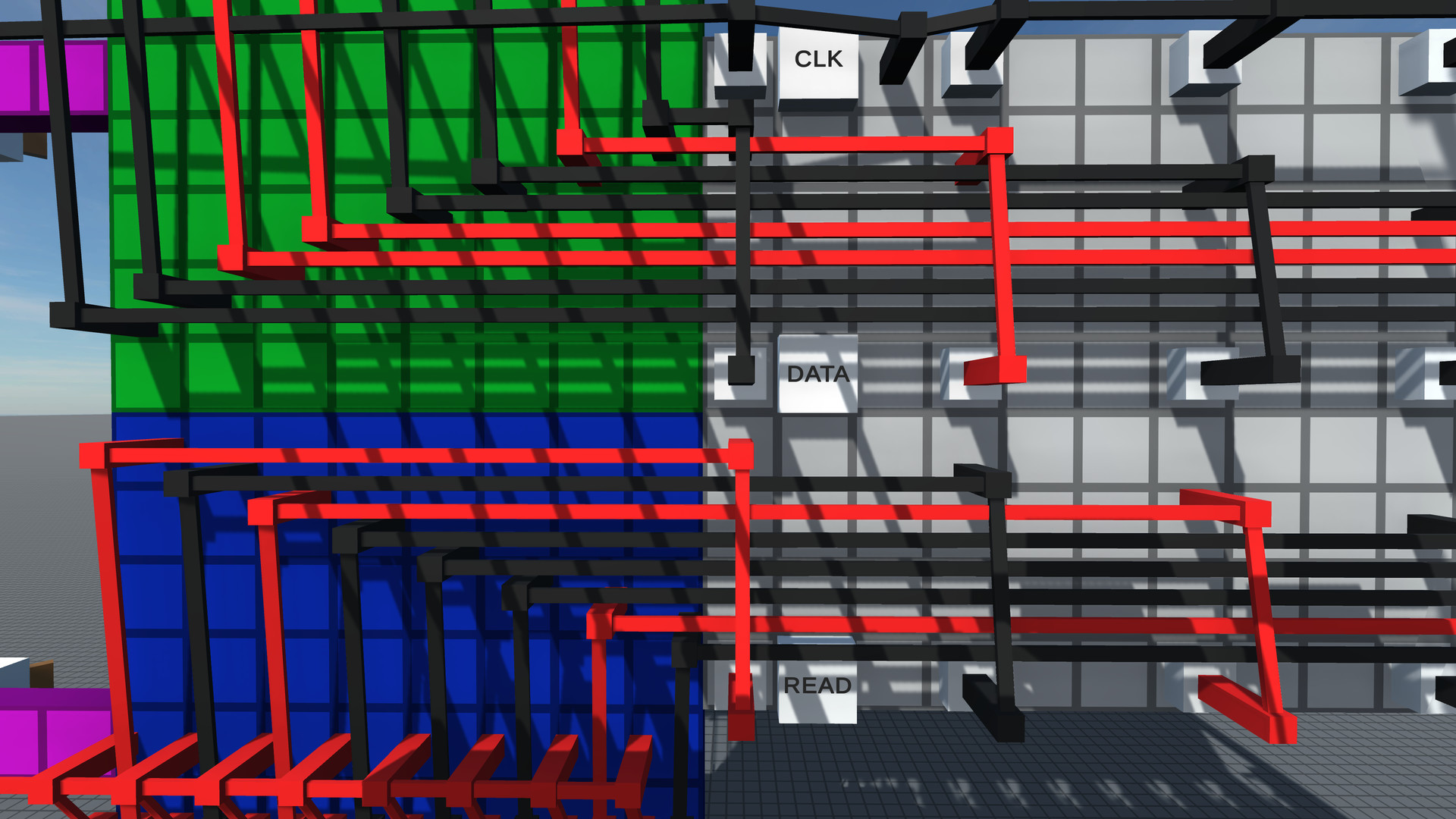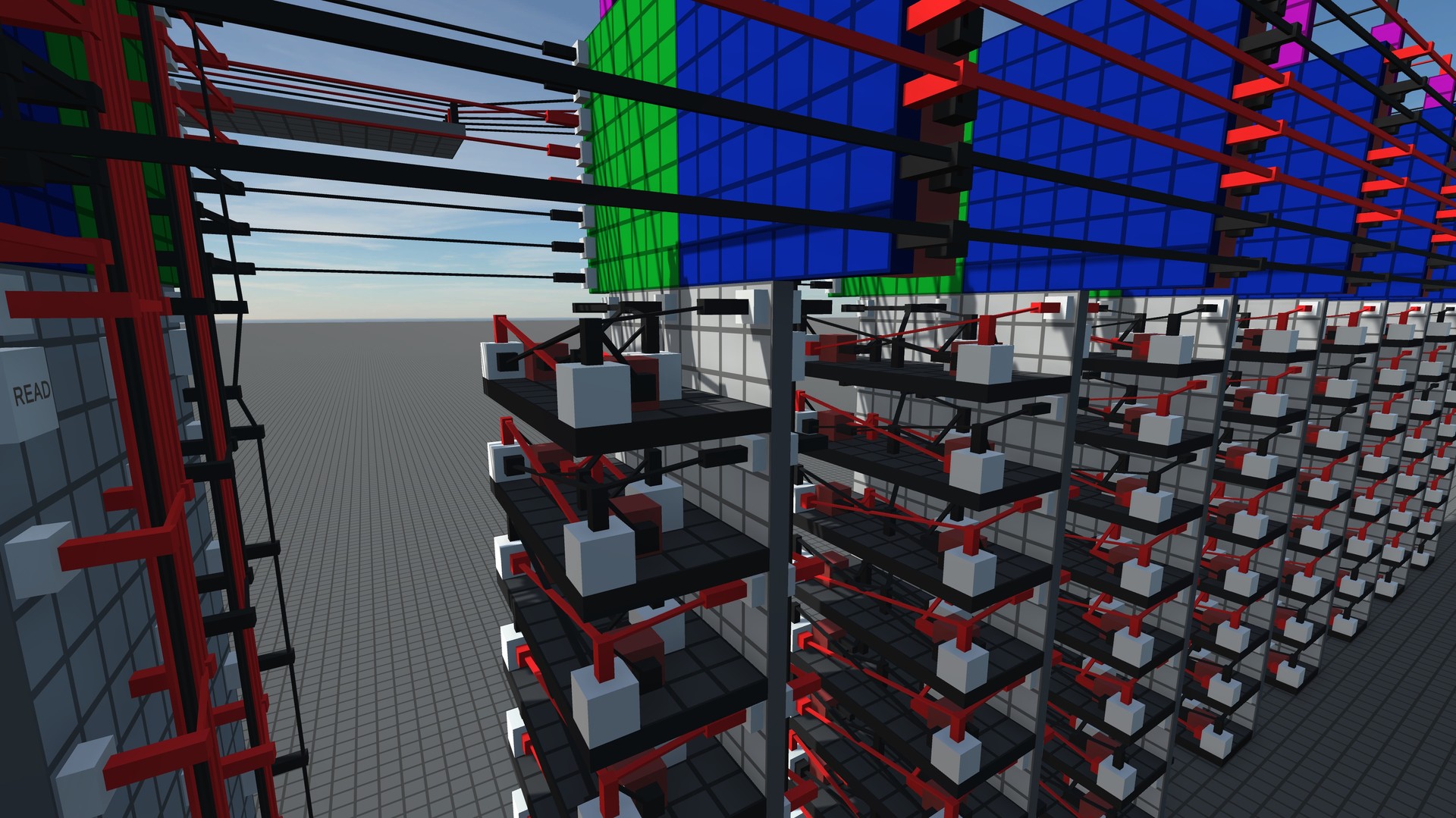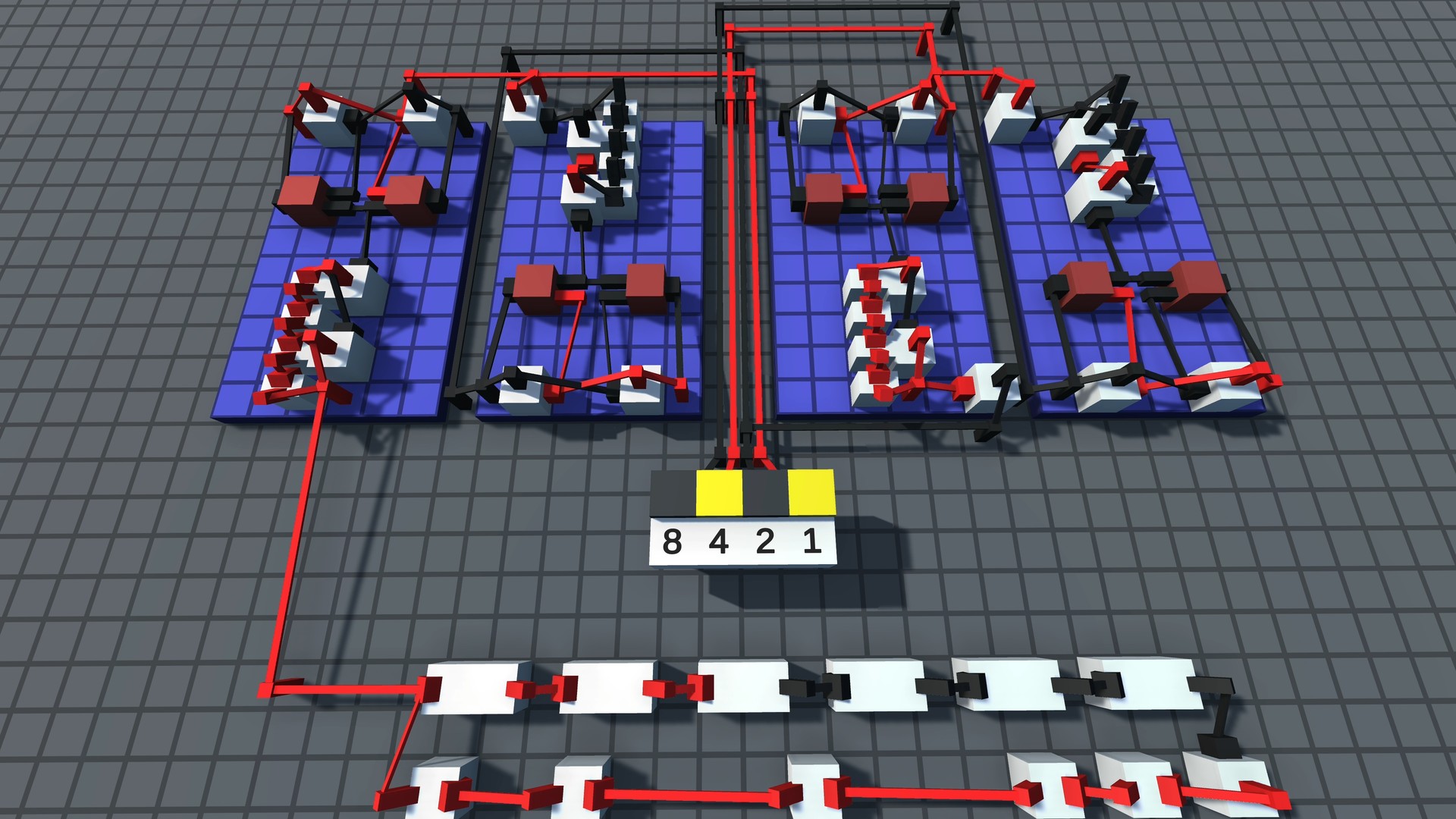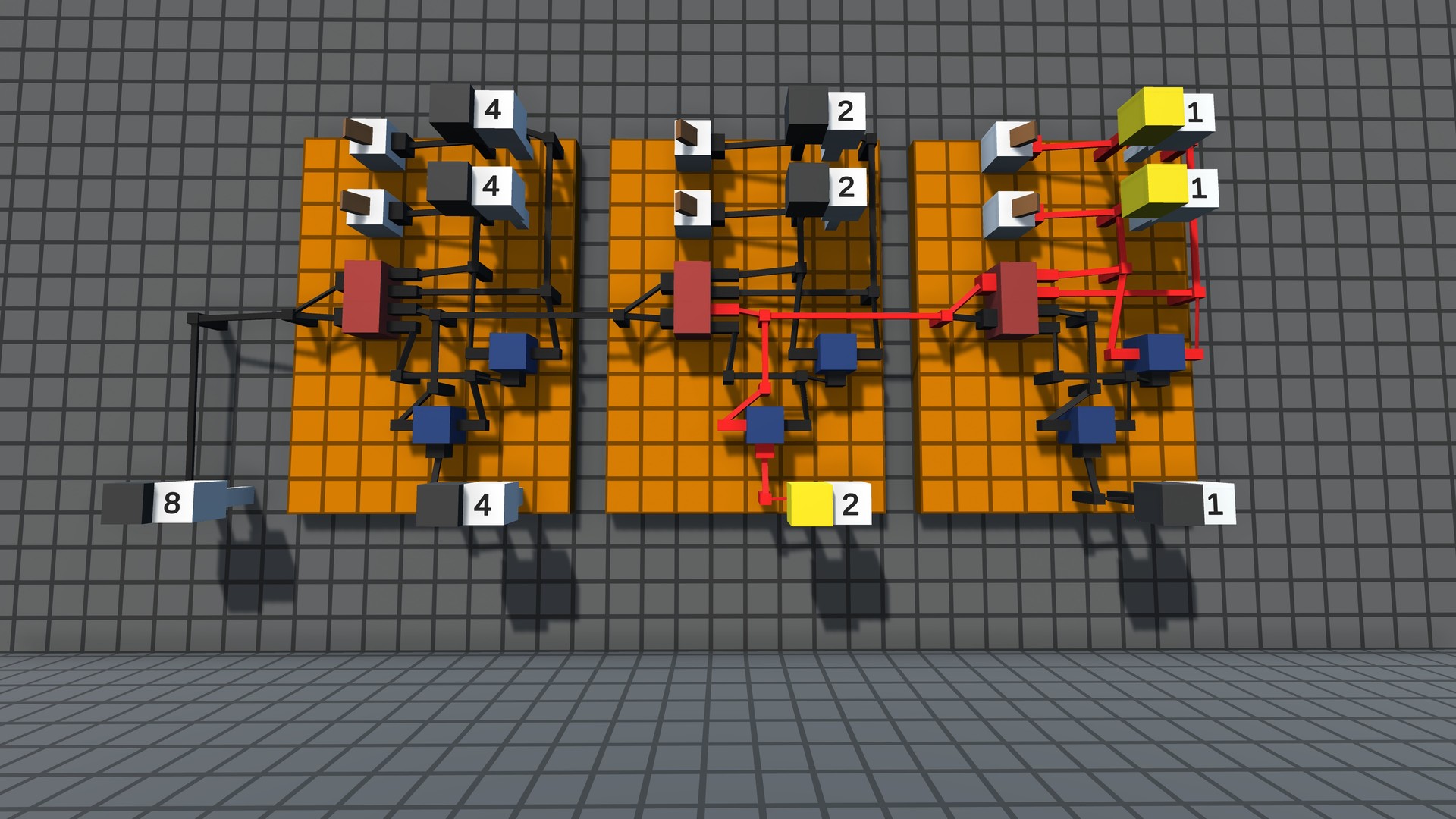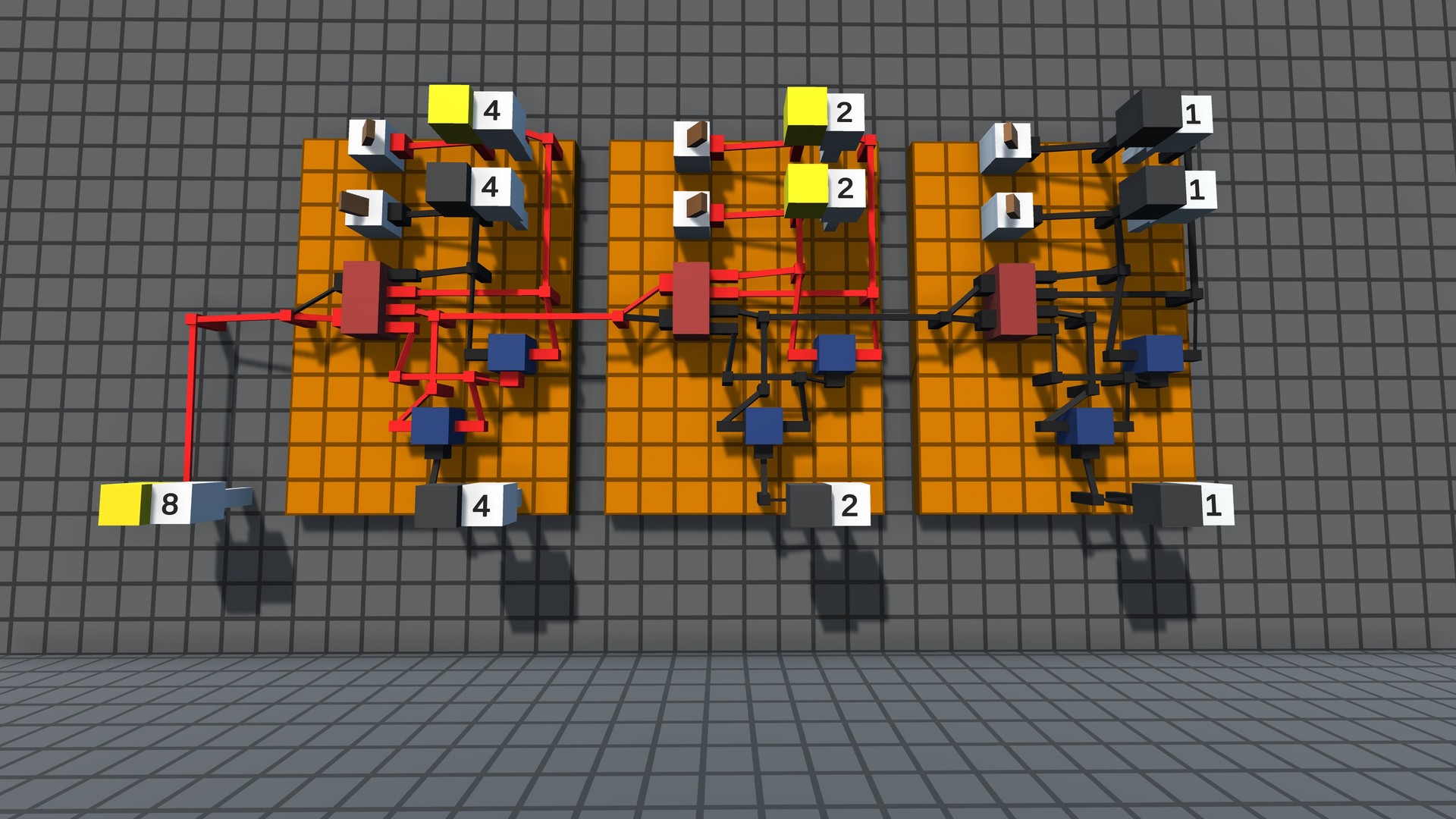Build. Program. Simulate. Logic World teaches you how circuits do math.
Key Features
- Digital Logic - Build circuits that work the same way real world computer chips do.
- Challenges - Solve puzzles from simple logic gates to complex machines like calculators and data storage.
- Multiplayer - Logic World is built from the ground up for collaborative multiplayer. Take on Challenges with your friends or build together freely in Sandbox mode.
- Performance - Build massive circuits and simulate them at thousands of updates per second - all without lag.
- Modding - Logic World features powerful modding tools - the same tools the developers are using to make the game.
- Online Hub - Players can upload their builds, mods, and custom challenges and share them with other players.

Logic World Wednesdays: The Stochastic Edition
I've been working on character movement logic, to ensure it feels smooth and pleasant in all situations. You're going to be using the character controller pretty much every single second while you're playing Logic World, so it's important that the movement logic is really solid.
As I spoke about last week , one of my main tasks for this month is to create awesome environments for you to build circuits in. It's time to put the 'world' in Logic World.
To that end, I've been working on environment tech and tooling this week. I've got a bunch of really cool stuff in the pipeline, but today I want to show you two particular shader features for rendering ground textures.
Human brains are finely tuned for pattern recognition. So when a game uses a repeating texture, we can easily spot the repetition. We see the grid lines, and it looks "fake".

There are a number of ways to solve this problem, and I did research into many of them this week. The solution I've chosen is procedural stochastic texturing , a technique invented by Eric Heitz and Fabrice Neyret in 2018. Stochastic texturing is fast, it looks amazing, and it's incredibly easy to set up.

The algorithm works by taking random hexagonal samples of the tiled texture, rotating them randomly, then laying the samples out on a hexagonal grid and blending them together. This, in my opinion, is absolutely bloody genius. There's a great visualization of how it works on page 5 of the research paper .
Logic World will use a particular implementation of stochastic texturing developed by Jason Booth for his Microsplat tool. This implementation uses texture heightmaps to blend the samples, to ensure the blends are super high quality with no visible seams.
A common issue with terrain in video games is that the textures are typically projected onto the terrain from above. This results in very ugly and gross stretching of the textures on steep slopes.

A common and effective solution to this problem is triplanar mapping . This technique uses three projections of the texture, one for each plane in 3D space. The projection used for a particular point on the terrain is determined by the normal to the surface there. At the borders between projections, they are blended together.

I want to build lots of lovely cliffs and mountains. With triplanar mapping, they are sure to look their best
This week I haven't had much time to dedicate to Logic World since I'm preparing for more final exams, but regardless I have made progress on mice , my new microservice library. More specifically, I've been working on migrating all our existing services to this library, which is just tedious work since I have to go one by one.
We'll keep releasing these weekly updates right up until the game comes out. To make sure you don't miss them, you can sign up for our newsletter or join the official Discord , and of course you can wishlist and follow the game right here on Steam.
View this post on logicworld.net More Logic World Wednesdays https://store.steampowered.com/app/1054340/Logic_World/ More Logic World Wednesdays
Moar Awesome Character Movement - Jimmy
I've been working on character movement logic, to ensure it feels smooth and pleasant in all situations. You're going to be using the character controller pretty much every single second while you're playing Logic World, so it's important that the movement logic is really solid.
Terrain Tech - Jimmy
As I spoke about last week , one of my main tasks for this month is to create awesome environments for you to build circuits in. It's time to put the 'world' in Logic World.
To that end, I've been working on environment tech and tooling this week. I've got a bunch of really cool stuff in the pipeline, but today I want to show you two particular shader features for rendering ground textures.
Stochastic Texturing
Human brains are finely tuned for pattern recognition. So when a game uses a repeating texture, we can easily spot the repetition. We see the grid lines, and it looks "fake".

There are a number of ways to solve this problem, and I did research into many of them this week. The solution I've chosen is procedural stochastic texturing , a technique invented by Eric Heitz and Fabrice Neyret in 2018. Stochastic texturing is fast, it looks amazing, and it's incredibly easy to set up.

The algorithm works by taking random hexagonal samples of the tiled texture, rotating them randomly, then laying the samples out on a hexagonal grid and blending them together. This, in my opinion, is absolutely bloody genius. There's a great visualization of how it works on page 5 of the research paper .
Logic World will use a particular implementation of stochastic texturing developed by Jason Booth for his Microsplat tool. This implementation uses texture heightmaps to blend the samples, to ensure the blends are super high quality with no visible seams.
Triplanar Mapping
A common issue with terrain in video games is that the textures are typically projected onto the terrain from above. This results in very ugly and gross stretching of the textures on steep slopes.

A common and effective solution to this problem is triplanar mapping . This technique uses three projections of the texture, one for each plane in 3D space. The projection used for a particular point on the terrain is determined by the normal to the surface there. At the borders between projections, they are blended together.

I want to build lots of lovely cliffs and mountains. With triplanar mapping, they are sure to look their best
More mice - Felipe
This week I haven't had much time to dedicate to Logic World since I'm preparing for more final exams, but regardless I have made progress on mice , my new microservice library. More specifically, I've been working on migrating all our existing services to this library, which is just tedious work since I have to go one by one.
Bugs Fixed This Week
- Fixed player vertical flying speed not changing proportionally with player scale
- Fixed "Player Gravity Scale" slider being adjusted in increments of 1.0 instead of 0.1
We'll keep releasing these weekly updates right up until the game comes out. To make sure you don't miss them, you can sign up for our newsletter or join the official Discord , and of course you can wishlist and follow the game right here on Steam.
View this post on logicworld.net More Logic World Wednesdays https://store.steampowered.com/app/1054340/Logic_World/ More Logic World Wednesdays
[ 2020-12-10 02:44:45 CET ] [Original Post]
Minimum Setup
- OS: Ubuntu 14.04
- Processor: 2.4GHz Quad CoreMemory: 8 GB RAM
- Memory: 8 GB RAM
- Graphics: Intel HD Graphics 4000 or AMD Radeon R5 series
- Storage: 2 GB available spaceAdditional Notes: system requirements might be adjusted before release
GAMEBILLET
[ 6439 ]
FANATICAL
[ 7253 ]
GAMERSGATE
[ 3708 ]
MacGameStore
[ 5362 ]
FANATICAL BUNDLES
HUMBLE BUNDLES
by buying games/dlcs from affiliate links you are supporting tuxDB

